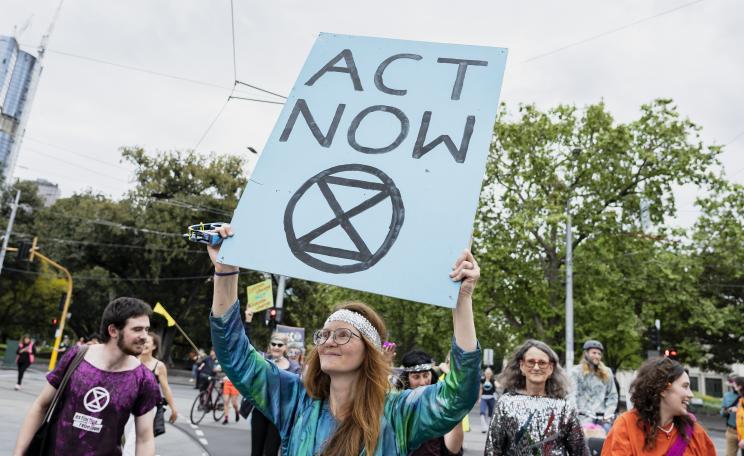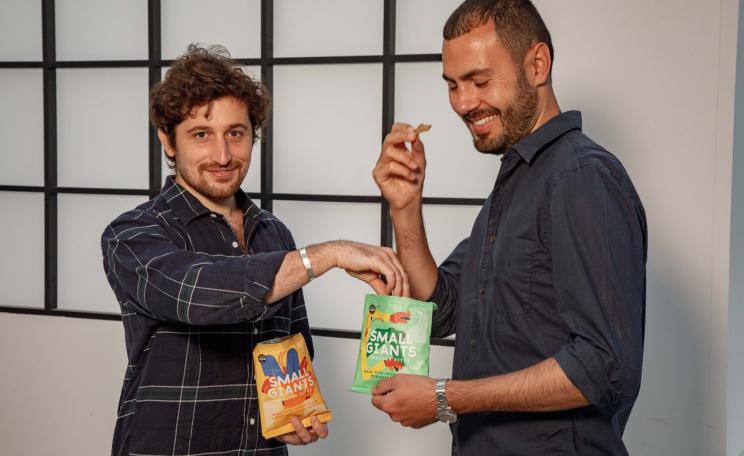Without elimination, achieving a circular economy for plastic will not be possible.
Consumers in the UK generate more plastic waste per person than residents of any other country except the USA - and less than 10 percent of it is recycled.
Not only is our recycling system overwhelmed but we’re also bombarding other countries with our waste too, causing serious harm to their citizens and environment, particularly in India, Indonesia and Malaysia.
Footprints
Public concern about the plastic pollution crisis has risen sharply, with results from a recent poll showing that 85 percent of people in the UK want the government to make retailers cut the amount of plastic packaging.
Yet despite this, new analysis by Greenpeace and the Environmental Investigation Agency (EIA) has found that the top 10 UK supermarkets actually increased their plastic footprints by 1.2 percent between 2017 and 2019, from 886,000 tonnes to nearly 897,000 tonnes.
Why are we still drowning in plastic?
- Decreasing oil price
Oil prices have dropped significantly during the COVID-19 pandemic. This means that the companies that make plastics don’t use as many recyclables as the price of virgin plastic is lower and there is very little incentive to use a recycled version.
- We use too much of it
It’s great we’re recycling more, but we don’t have capacity to process it. Reducing consumption in the first place seems blindingly obvious but it’s difficult to put into action when it’s ingrained in most of our daily lives.
Consumers are blamed but ultimately it’s up to a change from big corporations. Take supermarkets for example. On occasion, plastic can increase shelf life, but for the most part it’s unnecessary.
In 2019 UK supermarkets produced 896,853 tonnes of plastic packaging. This is a slight decrease from 2018 (less than two percent), but it’s way off the progress that our planet really needs, and is certainly nothing to shout about.
Without elimination, achieving a circular economy for plastic will not be possible.
One change that could help is the rise in online grocery shopping which is a huge opportunity to reduce plastic.
Recently, Tesco partnered with Loop, who uses completely reusable packaging, which is returned, cleaned and reused. If supermarkets replicated this on a large scale they could ditch thousands of tonnes of plastic.
- There isn’t enough closed loop recycling
Recyclists have a higher chance of selling high-grade clean plastics that can be sorted and processed quickly so these are prioritised e.g. water bottles.
At the moment, there is not enough closed-loop recycling (e.g. a bottle turning into a new bottle which means it can be recycled time and time again). Most plastic recycled in our households isn’t clean enough and ends up in an open-loop recycling process.
The problem with open-loop is that eventually materials can’t be recycled as water bottles become food packaging or polyester with low recovery rates
Weighing up the solutions
- Using plastic waste to replace sand
Sand? Random, you might think. Actually, the raw material is used for far more than sandy beaches. In the building sector alone, 40-50bn tonnes of the stuff is used around the world annually primarily in concrete, which is 25 percent sand. It’s also used in smartphone and TV screens, and think how many of them there are globally. Billions.
The problem is we’re running out of it - most desert or beach sand is unsuitable, so it is typically dredged from rivers, and due to the environmental damage this causes, countries including India, Cambodia and Vietnam have introduced bans in recent years.
Recent research by Dr John Orr, a lecturer in concrete structures at Cambridge University has found that plastic waste can be sorted, cleaned, shredded and crushed into a sand alternative for use in concrete.
Whilst this is an exciting prospect, ultimately long term we should be straying away from concrete and cement altogether to find a more sustainable alternative building material.
- Chemical recycling
Chemical recycling isn’t affected by contamination so could be a significant step in tackling the waste crisis. It works by breaking down plastic into its original form using heat or a catalyst so that it can eventually be remade and used in new plastic products.
However, we need to find ways of making it economically sustainable as at present it is a fairly expensive process and we lack the infrastructure. It also uses energy and produces fumes when the plastics are melted down, contributing to global warming so we’d need to source measures to control this.
- Gasification
At the moment, many plastics are burnt using incineration. However, this process emits fly ash and numerous other pollutants.
Gasification, on the other hand, produces 25-30 percent lower greenhouse gas emissions than incineration.
It works by using only a tiny amount of oxygen, which is combined with steam and cooked under intense pressure. This initiates a series of reactions that produces a gaseous mixture composed primarily of carbon monoxide and hydrogen.
- Deposit return scheme
Despite good intentions, small gestures towards stemming the plastic tide such as banning plastic straws and cotton buds have had minimal impact to date.
However, more significant reforms like introducing a plastic bottle ‘deposit return scheme’ could make a difference. Every year across the UK, consumers go through an estimated 14 billion plastic drink bottles, nine billion drink cans and five billion glass bottles.
The deposit return scheme is set to be in place in 2024 as was delayed by COVID-19. It would work by UK retailers imposing a deposit to customers on top of the price of glass bottles, plastic bottles and cans. Customers can then retrieve this after having returned the container to a designated return point.
- Extended producer responsibility for packaging
Extended Producer Responsibility (EPR) is set to come into force from 2023. Manufacturers will pay the full costs of managing and recycling their packaging waste, with higher fees being levied if packaging is harder to reuse or recycle.
Businesses producing and/or selling packaging will have a responsibility beyond the design and use of their packaging, which includes contributing towards it being collected and reused, recycled, or composted in practice.
- Plastic tax
A tax on plastic packaging with less than 30 percent recycled content is proposed to come into place from April 2022. It is estimated that by 2030 the tax will have raised £1.8 billion and the hope is that this tax will be used to produce UK reprocessing capacity as well as invested in collection and sorting.
- Ban single-use plastic
If the UK produced half as much single-use plastic, we could end waste exports, and send less plastic into incineration and landfill.
Without elimination, achieving a circular economy for plastic will not be possible. With the demand for plastic packaging set to double over the coming two decades, it will be impossible to keep this ever-growing flow of plastics in the economy and out of the environment.
- Using bioplastics
Bioplastics are forms of plastic that are either biobased, related to how the material is sourced (e.g. coffee cups made from coffee husks), or compostable, related to how the material can be processed after use (e.g. compostable tea bags or food caddy bags used in cities for food waste collection).
The problem with many bioplastics is that they can’t be recycled. Because of their lower melting point than raw plastics, they cause havoc if mixed in with petroleum-based plastics. They also won’t degrade in landfill as there is a complete lack of oxygen.
Also the environmental impact on land and water use of the material that makes bioplastics should be taken into account.
- Alternative materials
Long term alternatives to plastic are being researched and there are a range of packaging options being trialled globally. Examples include Ooho and Apeel.
Ooho is an edible and biodegradable packaging for beverages and condiments made from brown seaweed, a renewable natural resource. The condiment sachets have been trialled on Just Eat’s delivery platform and during the initial trial with ten restaurants, the use of 46,000 sauce sachets made from single-use plastic were avoided. The water capsules were also trialled at the 2019 London marathon, eliminating the need for more than 30,000 single-use plastic cups and bottles.
Apeel is a plant-derived coating for fruit and vegetables which slows water loss and oxidation. It extends shelf-life without the need for plastic packaging, such as shrink wrap on fruit and vegetables.A single cucumber supplier is expected to eliminate more than 30,000 kg of shrink wrap per year using Apeel. Apeel for avocados had been rolled out across all 1,100 stores of US retailer Kroger and was recently introduced in ASDA stores in the UK.
However, there can be unintended consequences of the alternatives too – a different material might have a larger environmental footprint due to the way it’s made or produce higher carbon emissions with its transportation (e.g. glass is heavier than plastic).
Given its versatility, plastic is expected to continue to be used for various applications, so the best approach is to design a plastics system that works, in which it never becomes waste or pollution.
- Re-design plastics
Without fundamental redesign and innovation, about 30% of plastic packaging will never be reused or recycled. So while recycling is part of the solution, we won't recycle our way out of the plastic pollution crisis.
Stuff can be designed better to last longer; food chains and toy makers don’t have to make poor quality goods; producers can use fewer virgin raw materials. Innovate to ensure that the plastics we do need are reusable, recyclable, or compostable.
- Individual contribution
Whilst ultimately we need cooperation from businesses and government to see long term change, there are ways in which we can individually contribute and help reduce demand for plastic:
- Buy loose veg when possible, and avoid thin plastic film if you can help it
- Buy fish and meat from the counters to avoid additional packaging
- Reuse coffee cups and water bottles
- Say no to microbeads
- Switch from shower gel to soap bars
- Buy refills for laundry detergent, washing up liquid, soap etc.
- Put two bins in your bathroom - one for recycling, one for landfill
- Wean yourself off the wet wipe
- Rinse out plastics to avoid contamination
- Keep lids on bottles when recycling
Passionate
If you feel passionate, you should also write to companies whose packaging you disagree with - letter, email, tweet. It’s incredibly effective.
For example, a member of the public complained to Unilever about plastic in PG tips teabags.
They made a petition which got 200,000 signatures and therefore the CEO said he would design plastic out of teabags. One man, one petition, 10 billion fewer plastic tea bags in the environment.
In the longer term we need deeper government support to stimulate and increase the capacity of domestic recycling and reprocessing and drive poorer quality plastics and packaging formats off the market.
This will largely be achieved by an effective, long-term, plastics tax to underpin domestic investment and extended producer responsibility policies to eradicate difficult-to-recycle or poor quality packaging formats from sale.
This Author
Sophie Johnson is a Zoology graduate and passionate conservation blogger from the UK.







